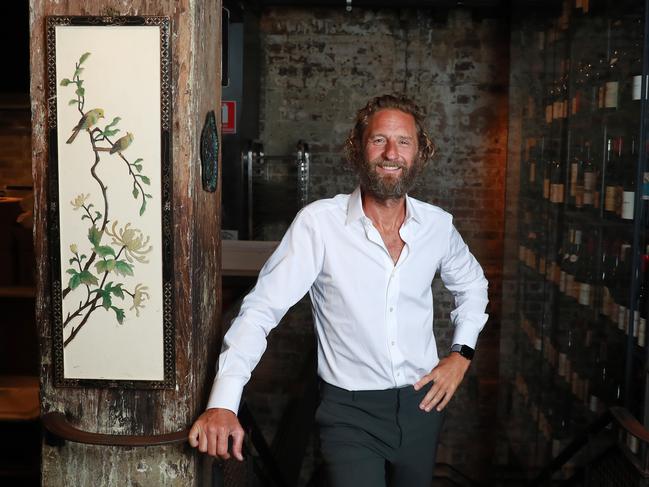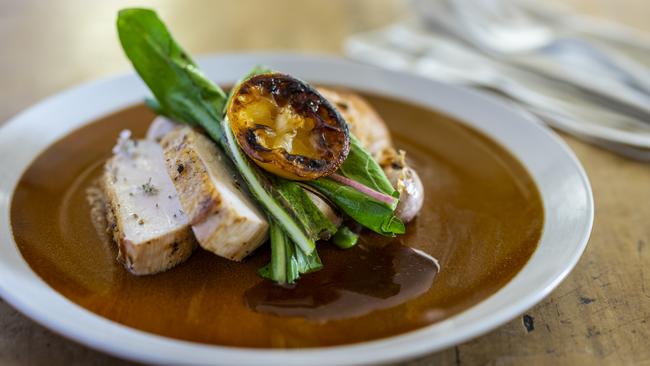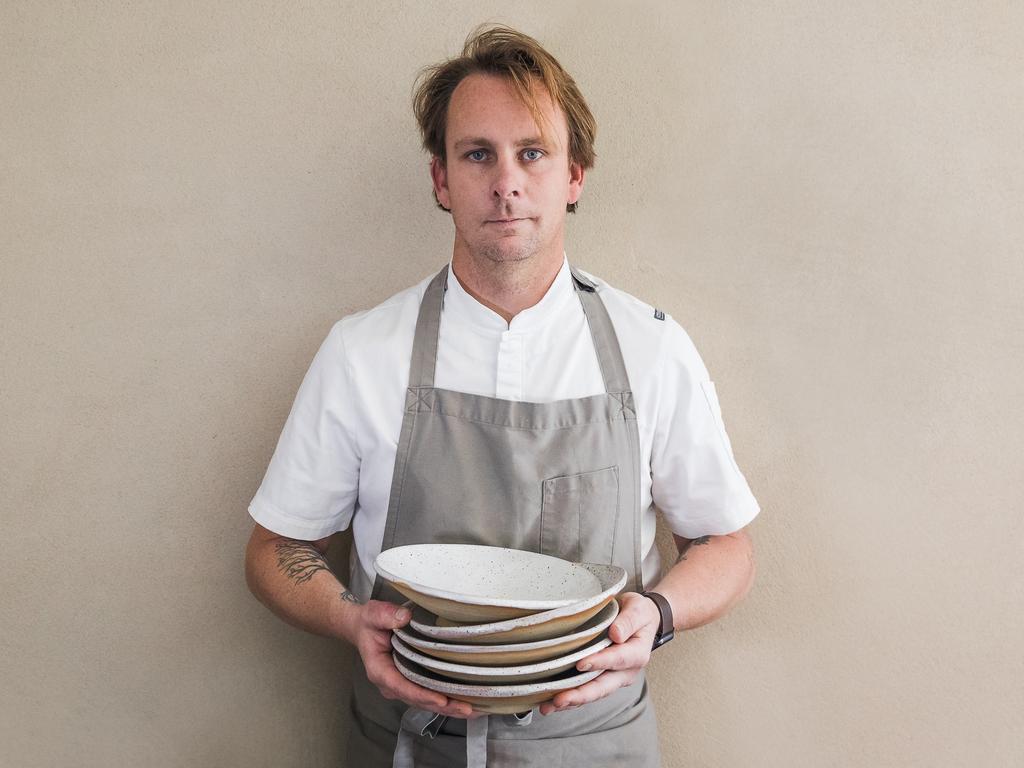What will dining out look like in 2002?
Bad service, high prices, no reservations — all banished? We forecast some potential pandemic silver-linings for restaurants in the year ahead.

Oh 2022, what do you hold for us? Blue skies or dark clouds? A cup that runneth over, preferably with decent wine, or bare cupboards?
Yes, it’s the time of year we polish the crystal ball and hope for wisdom. But as the great philosopher and Yankees baseball legend Yogi Berra once said: “It's tough to make predictions, especially about the future.“
The truth, of course, is that nobody knows what’s going to happen this year, but in the field of food and dining there are at least some likelihoods. And we can work with that.
We are at a unique time in history; at the risk of over-generalising, we are coming out of an almost two-year stasis in hospitality all over the world when, for the majority, plans were shelved to merely survive, within the parameters of whichever set of rules under whichever jurisdiction applied at the time.
Unsurprisingly, for many in the industry, it’s been a time of re-evaluation. What, exactly, will work now? With CBDs still quiet, labour shortages chronic, customers a little gun-shy?
What do we, the public, want? And what can they, the restaurant industry in all its myriad manifestations from fried chicken katsu to poulet de Bresse aux truffe, provide?
So where were we when the music stopped?
For better or worse, we’d reached peak indigenous. The gratuitous use of native ingredients in our restaurant kitchens had taken the shine off what was an otherwise sound idea. It’s faded like one of the six seasons we rarely hear about any more.
We’d probably reached peak Tasting Menu Only, too. Yes, it had a major spin immediately post Covid’s first wave, and the dining public went along with it out of sympathy for the restaurant industry, but by and large, across the country, most of us had reached the conclusion that most of the time it was an inflexible format that suited them more than us. Vote with your credit card.
We’d certainly hit peak provenance. Menus that name-checked growers, districts, brands and farmers, and sometimes all four, have been deemed try-hard. Way. We don’t need to know the name of the chicken; we just need bloody good chicken.

We’d reached peak ferment, too. The need for every kitchen to be a hive of bacteria and yeasts in order to stay relevant was at its zenith as we realised Sydney was not in fact Copenhagen, after all.
We’d hit peak pinky-pointing and tortured waiter explanation too. Thank goodness. No more sitting around watching your food go cold while someone points out at close range every single element of the dish. Well, certainly not as much as before.
Fundamentally, the past two years of uncertainty have led us to the conclusion that it is no longer all about The Chef. The worm has turned; the axis shifted. Restaurants are again about the person who matters most, you the customer, the person sitting on the seat. Paying the bill. At least they should be.
So what do I expect this year?
More classicism. Theatre. Drama. The restaurants that can convey the timeless aspects of hospitality are going to do very well. The meet and greet, the proper hosting, the engagement with customers without being sycophantic or servile, the delivering the bill to the table graciously, the getting of your jacket, coat or scarf. These places will add value at every turn. They will demonstrate that every element of the dining experience is an opportunity to impress the customer. The way a drink comes to the table; the way a bottle of wine is poured; the way condiments are presented; the way side dishes arrive at your table for serving … Everything will be treated as an opportunity to leave a memory that builds to a collective experience that lingers.
These restaurants are going to be expensive; ’twas ever thus. But as record Champagne consumption during Covid suggests, we want indulgence and are prepared to pay for it after the bruising time we’ve come through. We want comfort, but we want it better than we can have it at home: the places that dramatise the ordinary will thrive.
On the plate, I expect extreme innovation to be the exception rather than the rule. Playing it safe, basically. The places that will do well this year will demonstrate a return to craft and technique with exceptional, often unique produce doing the talking. It will be about real skills demonstrated through classic dishes, freshened up. I give you Gimlet, in Melbourne, and Ursula’s in Sydney: restaurants that exude glamour, production values, but do not confuse the diner.


The menu will give you a clear expectation of what’s about to arrive, not a cryptic, unpunctuated clue that makes sense only to another chef. Probably one with a beard and under 40.
There will be more vegetables than ever before; certainly at the high end of dining. If (famed Manhattan fine diner) Eleven Madison Park can turn meatless, this may even be the year imitation meats make it from the fast food sector and into Australian bistros. It has to come.
As time marches on, our wine buyers and sommeliers are increasingly sympathetic to the notion of lo-fi, or low intervention, or even “natural” wine. The smarter ones are already integrating the best examples of these wines with those produced in more classical fashion. Only the cack-handed will ask those of us with disposable income to indulge their poorly educated no sulphur, no filtration weird blend wine selections exclusively.
Sustainability, and environmental credentials, will need to be real, not just window dressing. We diners should expect our restaurant operators to be good, green citizens.
And our restaurants will have an increasingly important role in setting the kind of environmental culture that trickles down to our own homes and our own practices.
For the small restaurant operator searching for great staff, I’m a little concerned. The employers of choice – and we all know who they are, in each city – will be the ones who can afford the best kitchen and floor staff. The good will get gooder.

And for the rest, service is going to be Russian roulette until such time that international workers are back en masse and our domestic borders become permeable membranes for the interstate talent osmosis required by the hospitality industry.
Whether that service is in the dining room or on the terrace, 20/21 has clearly taught us the value – literally – of using outdoors space productively and that will be a permanent change. There isn’t a restaurant operator in Australia right now who hasn’t uttered the words: “what if there’s a lockdown tomorrow?”
And to that end, our restaurant operators are madly building baskets into which to spread their eggs. Already, we are seeing successful chefs diversify from their core restaurant businesses into ventures that don’t rely on tables and chairs nearly as much as their popular dining rooms.
And if they are not opening rotisserie fish shops, or bakeries, they are probably looking at models that can thrive in a short skilled-labour world. Gathering places that occupy a netherworld between bar and restaurant, with a focus on wine and a much lower reliance on waiters, will continue to bloom. Perth, in particular, has seen a rash of them in the past 18 months and customers are voting with their wallets: if the corollary of lower, counter service is fair prices, we can go for that. Or so I hear them say.
Expect a lot more places to adopt the order-from-the-table tech systems, such as Me&U, to cut out the waiters who used to take orders, too. Once the preserve of pubs and franchise joints, the systems are moving uptown and the Sydney-based empire of Merivale’s Justin Hemmes is a good example. They have 14 venues using the system already, with three more to begin shortly.
And since we can’t leave the country and get back in without risk, we are going to keep exploring the vast spaces outside our cities, which means regional dining should have an increasingly healthy audience.
The regions are already home to some of our most exciting eating, and in just about every state there are important new places, or projects on the drawing board, destined to make headlines in 2022, from country pubs to high-design gastro-destinations.

One prominent food and wine businessman even put to us a theory that prices for name-brand, quality wine will come down. His thesis: during Covid, we consumers started buying those wines we previously bought only in restaurants, on special occasions, to drink at home. And now we know exactly what that respected Barolo costs in the imports section of Dan Murphy’s. We want to keep drinking it – out – but not at 200 per cent, regardless of glassware, service and all the peripherals that contribute to a bottle’s price on a wine list.
We’ll see.
But one thing’s for sure: Australians are rabid eater-outers; restaurants and wine bars continue to fill the social void left by unreconstructed pubs. And whatever form our dining venues take, and however they operate, will be fascinating to watch.
The big question is: what impact will the past two years have, long term? We’re about to witness the first 12-month chapter.


To join the conversation, please log in. Don't have an account? Register
Join the conversation, you are commenting as Logout